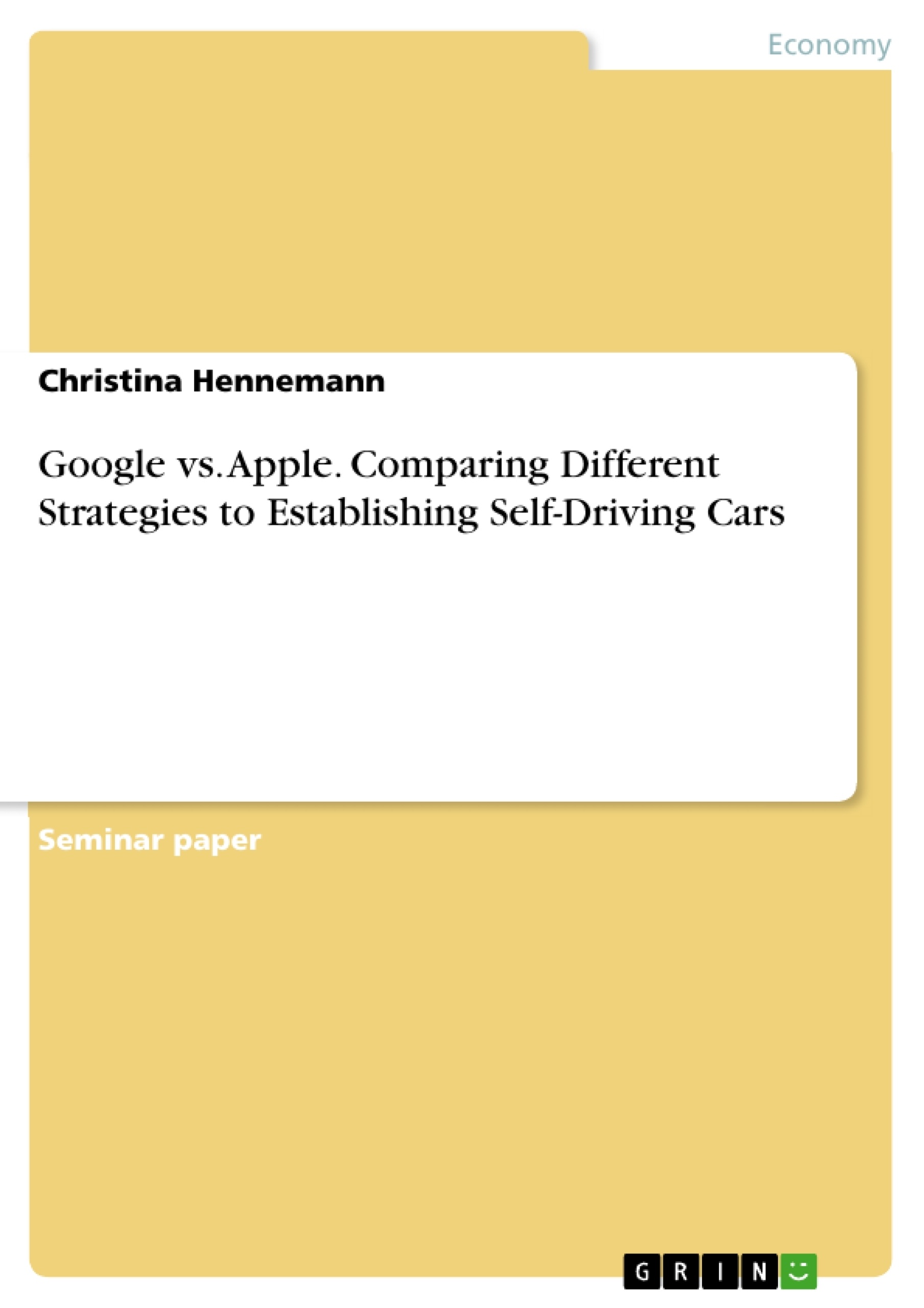Self-driving cars are highly topical and much research is done in this field by leading international technology companies and car manufacturers. Google and Apple are both likely to launch a self-driving car in a few years and compete in being the first to develop the required technology. This paper reveals two entirely different strategies to establish self-driving cars by comparing the two technology giants’ way of bringing a car into the market.
The technology required for driverless cars includes a computer software specifically developed for self-driving, sensors consisting of lasers, radars and cameras to indentify objects in all directions, electric batteries, back-up systems taking over the driver’s tasks and a car shape that does not interfere with the sensors’ field of view. There is still much research to be done in this field, but it is quite sure that driverless cars will work in a few years.
For this purpose, the firms’ resources are analysed with the help of the resource-based view. Then, this paper derives the different company strategies and applies them to the self-driving car projects of Google and Apple.
Inhaltsverzeichnis (Table of Contents)
- Introduction
- Analytical Framework: The Resource-Based View
- Analysis of Apple
- The Resource-Based View Applied to Apple
- Apple's Strategy for Establishing a Self-Driving Car
- Analysis of Google
- The Resource-Based View Applied to Google
- Google's Strategy for Establishing a Self-Driving Car
- Conclusion
Zielsetzung und Themenschwerpunkte (Objectives and Key Themes)
This paper examines the strategies of Google and Apple in establishing self-driving cars. It explores the resources and capabilities of each company, their respective approaches to developing and launching self-driving car technologies, and the implications of their strategies for the future of the automotive industry.
- Resource-based view as an analytical framework for assessing company strategies
- Comparison of Apple's and Google's strategies in developing self-driving cars
- Analysis of the resources and capabilities of each company
- Exploration of the implications of their strategies for the automotive industry
- Evaluation of the potential impact of self-driving cars on society
Zusammenfassung der Kapitel (Chapter Summaries)
- Introduction: The chapter introduces the topic of self-driving cars, highlighting the increasing research and development efforts by leading technology companies and car manufacturers. It focuses on Google and Apple's likely entry into the self-driving car market and their contrasting approaches, with Google being more open about its project and Apple maintaining a more secretive approach. The chapter outlines the technology required for driverless cars and the potential impact of this innovation.
- Analytical Framework: The Resource-Based View: This chapter introduces the resource-based view as a theoretical framework for analyzing the strategies of Google and Apple. It explains the key concepts of the framework, including the importance of resources, capabilities, and competitive advantage in understanding company success.
- Analysis of Apple: This chapter applies the resource-based view to Apple's strategy for establishing a self-driving car. It analyzes Apple's resources and capabilities, including its brand reputation, technological expertise, and financial resources. The chapter then examines Apple's strategy for developing and launching a self-driving car, considering its focus on secrecy, its acquisition of talent from the automotive industry, and its investments in research and development.
- Analysis of Google: This chapter applies the resource-based view to Google's strategy for establishing a self-driving car. It analyzes Google's resources and capabilities, including its vast data resources, its expertise in artificial intelligence and machine learning, and its strong partnerships in the automotive industry. The chapter then examines Google's strategy for developing and launching a self-driving car, considering its open approach, its collaboration with Fiat, and its focus on testing and data collection.
Schlüsselwörter (Keywords)
Self-driving cars, Google, Apple, resource-based view, strategy, technology, automotive industry, data, artificial intelligence, machine learning, partnerships, innovation.
- Quote paper
- Christina Hennemann (Author), 2016, Google vs. Apple. Comparing Different Strategies to Establishing Self-Driving Cars, Munich, GRIN Verlag, https://www.grin.com/document/367564



